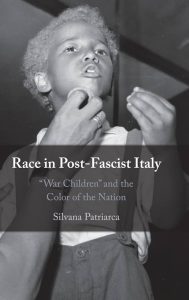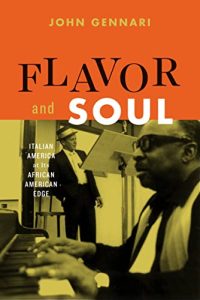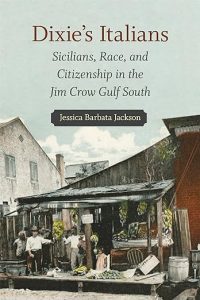
How the Kingdom of the Two Sicilies and the Risorgimento help us reflect on Italy’s relationship with race.

Do Italians embrace their own diversity, and do they accept others? This was the question on Zoe’s mind when she began to think about the very first episode of UNLEARN. Producer, director and editor, Zoe has been living in New York for the past fifteen years, and her newly found knowledge on the concept of whiteness and structural racism were the catalyst to pose questions to her Italian community. In encouraging the unlearning of many clichés, she poses this question to her very first guests.
Silvana Patriarca is a historian and professor at Fordham University, in New York City, and has been living in the U.S. since 1991. In a one-on-one interview with Zoe, she pointed out that studying nationalism means that you’ll eventually study racism, and this is a realization that shouldn’t be taken for granted. In Italy it’s common knowledge that Southern Italians have been racialized, due to the southern regions’ proximity to Africa, with negative stereotypes suggesting that meridionali are prone to criminality and laziness, unlike settentrionali – Northern Italians.
LISTEN
Patriarca notes that Italians are reluctant to talk about racism, convinced that if they don’t say the word razza (race), that they’re anti-racist. With the fall of the Fascist regime in Italy, references to race disappear, but it’s clear that after years of colonialism, the idea of race continues. So if race is not in official discourse, we need to look elsewhere. Aside from Southern Italians, we need to ask ourselves, who else is racialized in Italy? Who are those people who don’t meet the prerequisites of being a “true” Italian? I am amazed at how Italians collectively understand that African Americans are Americans, but won’t grant the same understanding to Italians of color as being Italians, still considered foreigners by Italian society.
Watch this one-on-one interview with professor Silvana Patriarca

‘Nero di Puglia,’ published in 1980 by Antonio Campobasso, led Patriarca to learn and then write about the experiences of POC Italian kids born after World War II, from allied soldiers – African American and non-white – and Italian women. You can read about it in her book ‘Race in Post-Fascist Italy “War Children” and the Color of the Nation.’

The little boy on the cover of professor Patriarca’s book is Angelo Maggio, born in Naples in 1945. The son of an Italian woman and an African American soldier from Chicago. Abandoned at birth, he was adopted by actor Dante Maggio.
SOURCE: WIKIPEDIA
On the importance of listening to people who have experienced racism, professor Patriarca says:
“There is an arrogance by scholars in thinking that they know the reality in a way that doesn’t need to be confronted with others. It’s absolutely necessary to listen.”
Stephen Cerulli, the third guest alongside myself and professor Patriarca, is a multi-generational Italian American, a PhD candiate in Modern history at Fordham University, and a researcher at the Calandra Italian American Institute, Queens College. In tracing back his heritage, he shares that he’s from what once was called The Kingdom of the Two Sicilies, a combination of the different southern Italian regions that we know today. When Cerulli paints a picture of the diverse social landscape prior to the Risorgimento, he traces parallels between the problematic views on race that are at the base of the movement for the unification of Italy, with the discrimination Italians who emigrated to America in the late 1800s had to endure. What were the Italians in the racial hierarchy in America? Cerulli poses this question then gives us the answer “Legally speaking, always white. But within whiteness, there are hierarchies.” In this episode, Cerulli also explains how racism is a product of colonialism, and how race is being used as leverage by some leaders in the Italian American community to uphold a controversial figure in our history, Christopher Columbus. There has been a push to label Italians as “non-whites,” this way the removal of the monuments of Christopher Columbus would legally be considered a hate crime. The irony is not lost on us. Christopher Columbus is not at the center of public discourse in Italy, not like Indro Montanelli, a journalist and an admirer of Benito Mussolini’s dictatorship who bought and married a 12-year-old Bilen child to act as his sex slave in 1935, but learning about the controversy around Columbus statues is an entryway for Italians from the peninsula to understand race relations in America.
WATCH THIS
On the lack of imagination, Kristal says:
“We need to create a world in which we embrace different versions of Italianness, but we need to imagine it first.”

LISTEN
Why talk about these issues in English and not in Italian? It’s a process. I was able to envision Accento World only after moving to the United States. Italy couldn’t provide me with the words to express the intricate dynamics of living in our multicultural and multiethnic society. So now, how to start a dialog? How to have it in Italian? Not all language is interchangeable across cultures, especially without the proper context. Nadeesha Uyangoda, Natasha Fernando and Maria Catena understood this and created Sulla Razza, a podcast that translates concepts and words from American culture, and apply them to the Italian context to see if they are equally as effective. Like UNLEARN, Sulla Razza is one of the many projects that the diaspora is putting into the world to initiate conversations. Sooner or later, we must begin this journey of collective growth, so why not now?
VOCABULARY
Jus Soli: right of the soil
The right of anyone born in the territory of a state to nationality or citizenship, also commonly referred to as birthright citizenship in some Anglophone countries, is a rule defining a person’s nationality based on their birth in the territory of the country.
Jus Sanguinis: right of the blood
Is a principle of nationality law by which nationality is determined or acquired by the nationality of one or both parents. Children at birth may be nationals of a particular state if either or both of their parents have nationality of that state.
Redlining:
Evidence of redlining is the systematic denial of mortgages, insurance, loans, and other financial services based on location—and that area’s default history—rather than on an individual’s qualifications and creditworthiness. Notably, the practice of redlining is felt the most by residents of minority neighborhoods.
Microagression:
A term used for commonplace verbal, behavioral or environmental slights, whether intentional or unintentional, that communicate hostile, derogatory, or negative attitudes toward stigmatized or culturally marginalized groups.
Gaslighting:
A colloquialism, loosely defined as manipulating someone into questioning their own perception of reality.
Nationalism:
It aims to build and maintain a single national identity, based on a combination of shared social characteristics such as culture, ethnicity, geographic location, language, politics (or the government), religion, traditions and belief in a shared singular history, and to promote national unity or solidarity.
Patriotism:
The feeling of love, devotion, and a sense of attachment to a country or state. This attachment can be a combination of different feelings for things such as the language of one’s homeland, and its ethnic, cultural, political, or historical aspects. It may encompass a set of concepts closely related to nationalism, mostly civic nationalism and sometimes cultural nationalism.
Emigration:
The act of leaving a resident country or place of residence with the intent to settle elsewhere (to permanently leave a country). Conversely, immigration describes the movement of people into one country from another (to permanently move to a country). A migrant emigrates from their old country, and immigrates to their new country. Thus, both emigration and immigration describe migration, but from different countries’ perspectives.
Like this subject? Subscribe to the newsletter!
DISCLAIMER: Things you buy through our links may earn us a commission.





